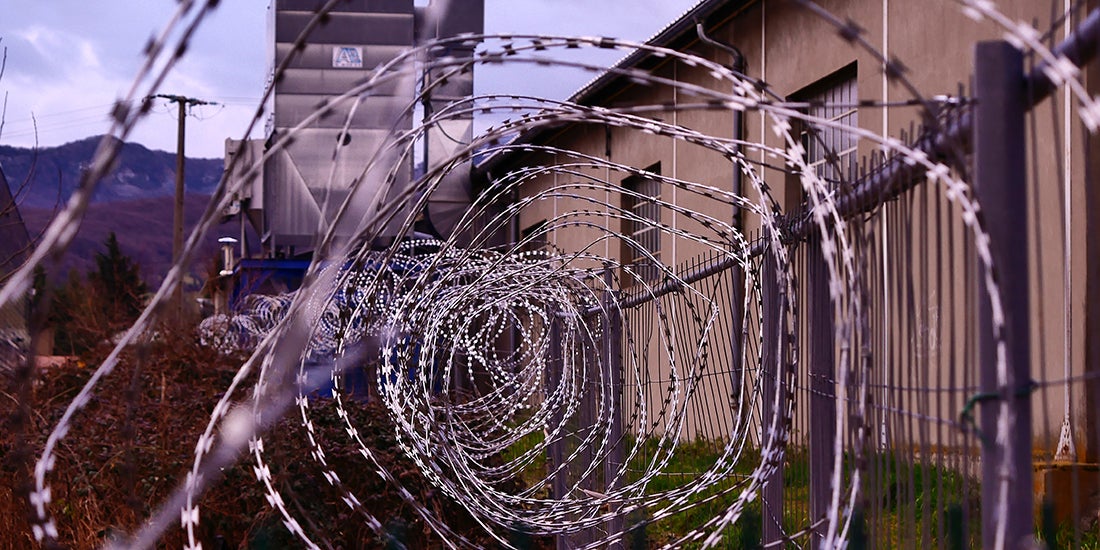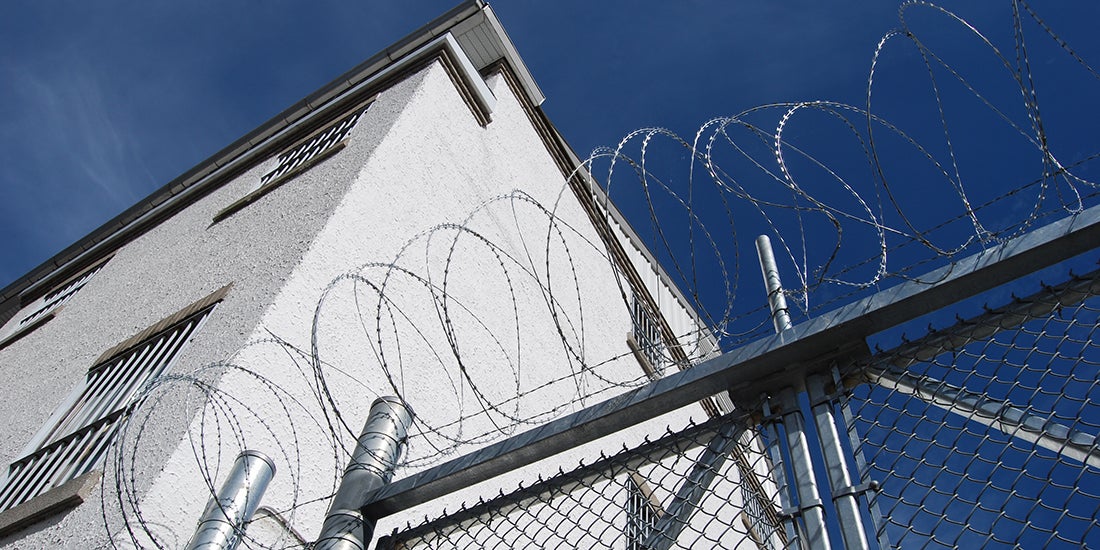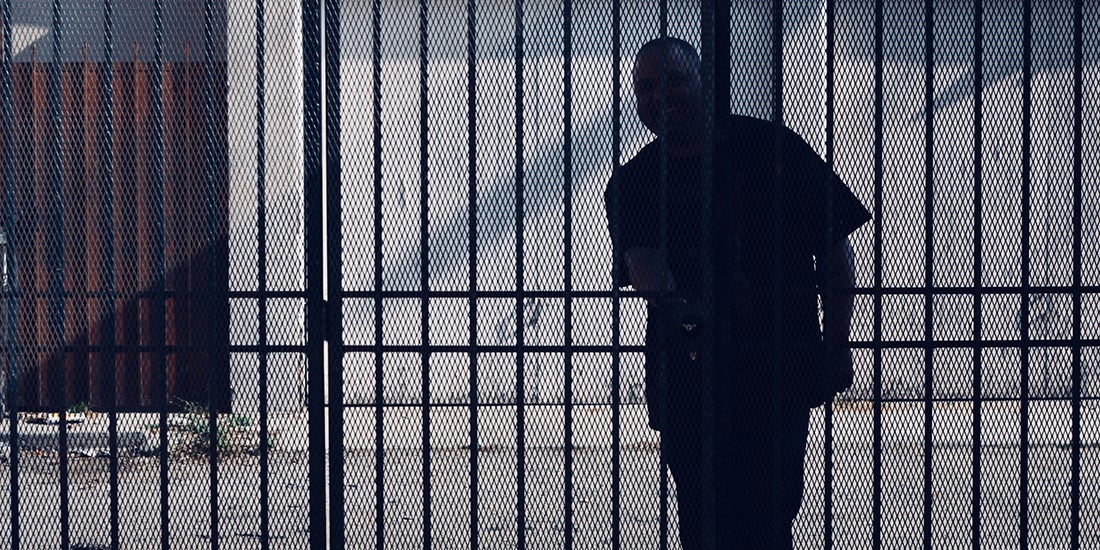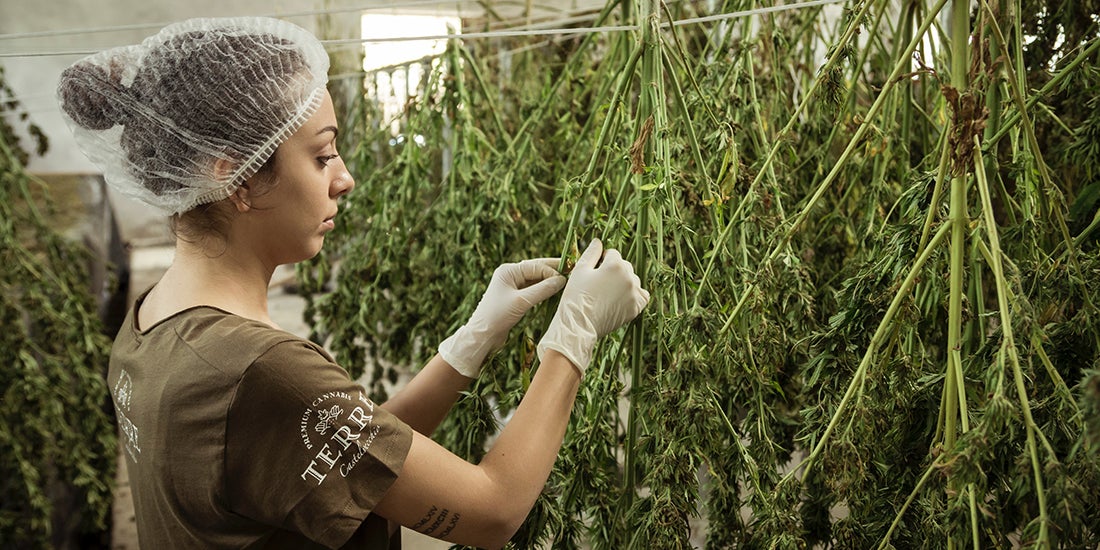

Cody Jorgensen is Assistant Professor of Criminal Justice at Boise State University. His research interests include developmental and biosocial criminology, policing and forensics, drug policy, and quantitative methods.
The 2020 election is ramping up and the democratic candidates have been laying out their agendas in preparation for the upcoming primary election. The issue of marijuana policy reform is not the cornerstone of any of the leading democratic candidates’ platforms; however, most of them have discussed their plan dealing with the marijuana issue.
For example, Bernie Sanders has laid out a comprehensive plan to reform our current marijuana laws that includes legalizing the substance within the first 100 days in office and vacating/expunging all marijuana-related convictions. Other candidates like Elizabeth Warren, Corey Booker, Kamala Harris, Pete Buttigieg, Andrew Yang, and Amy Klobuchar have taken a similar stance and most of the democratic candidates support the Marijuana Justice Act sponsored by Senator Booker. This proposed legislation would remove cannabis from the Controlled Substances Act, expunge marijuana-related convictions, and bar federal funds to states that enforce cannabis laws in a discriminatory way.
Of the leading candidates, Joe Biden is an outlier. He does not support the legalization of marijuana at the federal level. Instead, Biden argues that legalization should be determined by the states. His reluctance seems to be due to his belief that marijuana is a gateway drug. However, research (Jorgensen; Cleveland and Wiebe; Van Gundy and Rebellon) has consistently shown that Biden’s belief is misguided.
On the other hand, President Trump and his fellow members of the GOP remain steadfast in their opposition to marijuana legalization. They tend to favor the status quo or even ramping up enforcement and prosecution of marijuana-related offenses.
Critics of cannabis reform have given several justifications for prohibiting marijuana, including arguments such as the following
- marijuana causes more harm to society and the user than alcohol and tobacco
- the increased potency of marijuana is dangerous
- the addictive properties of cannabis cause abuse
- decriminalizing marijuana sends a latent message that people should be using it
- drug use is on the rise (especially among youth)
- and marijuana is a gateway drug causing the use of harder drugs.
All of these justifications listed have been debunked by empirical research and are more fiction than fact. As an alternative to misinformation supporting prohibition, this article will present an evidence-based argument for legalizing marijuana and suggests that doing so would be beneficial to our criminal justice system. In short, the Marijuana Justice Act would be good policy.
Marijuana prohibition is undemocratic
According to the latest Gallup poll, a large majority of Americans favor legalizing marijuana. As of 2019, 66% of Americans support legalization. Looking back at long term trends, the data show that attitudes about marijuana and its prohibition have changed dramatically over the past few decades.
When Gallup first measured attitudes about marijuana, only 12% of the population favored legalization. A steady increase in favorable attitudes towards legalization followed with a more dramatic increase beginning in the early 2000s. In 2001, 31% favored legalization and in 2010 that percentage increased to 44%.
There also seems to be a relationship between political ideology and attitudes toward legal cannabis. Gallup data shows that 76% of Democrats, 68% of Independents, and 51% of Republicans favor legalization. Going into 2020, the recreational use of marijuana will be legal in 11 states. This trend began with moves by Colorado and Washington to legalize in 2012.
A likely explanation for the change in marijuana attitudes is that the public understands that cannabis is a less harmful substance than other substances that are currently legal, such as alcohol or prescription drugs. Alcohol is by far a more harmful drug to society and the individual user as compared with marijuana. It follows that criminalizing recreational marijuana use is seen by a large swath of Americans as unjustified or even hypocritical because many Americans drink.
It should also be noted that laws that are viewed by the public as unjustified or illegitimate are not likely to be complied with. Put another way, people are unlikely to voluntarily abide by laws or rules that they view as unwarranted. When the criminal justice system enforces laws that the bulk of the public disagrees with, it harms the credibility of the criminal justice system which, in turn, impedes its ability to accomplish its goals of controlling and reducing crime.

Marijuana prohibition is costly
In 2018, there were more than 663,000 marijuana-related arrests made in the United States. More than 608,000 of those arrests were for marijuana possession only. This means that law enforcement is primarily arresting recreational cannabis users, not dealers. Many of those arrested will end up incarcerated, exacerbating the fact that tax monies supporting the incarceration of non-violent drug offenders are significant. Costs range between $30,000-$35,000 per year to house an inmate.
Furthermore, there are substantial costs involved in making arrests. While calculating the cost of an arrest is difficult and estimates vary widely based on how the cost is calculated, low estimates put the average cost of an arrest around $1,000 (The National Juvenile Justice Network; Drug Policy Alliance) and up to around $5,000 on the higher end. This suggests that between $600,000,000 and $3,000,000,000 is spent simply arresting recreational marijuana users. Those tax dollars could be better spent elsewhere, such as on officers’ salaries or updating equipment. Additionally, the process of making an arrest and taking an offender to jail takes the arresting officer off of the street for a significant amount of time, typically a couple of hours. That lost time could also be better spent with officers out on the street making their presence known and/or engaging with community members.
The economic costs are not the only costs associated with marijuana prohibition. There are also human costs, which may outweigh the economic costs. Having a conviction for marijuana possession on a record is not a trivial matter. This mark of a criminal record can negatively affect people in numerous ways. For example, college students can lose their federal aid for tuition and employees can get fired from their jobs due to a single marijuana-related offense. Having such a record also makes it significantly more difficult to get a job, a loan, or to rent an apartment. These are obviously stressful events that can strain relationships and negatively impact one’s mental well-being.
One of the more damaging effects of an arrest is the harm caused by introducing an otherwise law-abiding pot smoker into the formal criminal justice process. Being processed through the system, from initial contact with police to completion of a sentence, is stressful, frustrating, and often seen as unjust. This is especially relevant for non-violent recreational marijuana users who have done nothing else wrong.
The experience is generally viewed as an excessive punishment that does not fit the crime which often leads to offenders (and people close to them) to lose faith and trust in the criminal justice system. This is important because the system cannot effectively do its job if it does not have the support of the public. In this way, marijuana prohibition can do more harm than good.

Marijuana enforcement is racially biased
Marijuana use is fairly equally distributed across social strata. Whites, blacks, Hispanics, the affluent, and the poor use marijuana at about the same rate. However, enforcement of marijuana laws is not equally distributed across social strata. Instead, minorities and the poor are much more likely to be arrested for simple marijuana offenses. Nationally, African Americans are about four times more likely than whites to be arrested for cannabis.
The disparity is even greater depending on where people live. For example, in Iowa, Washington, DC, and Minnesota, African Americans are eight times more likely to be arrested. This is strong evidence of racial bias and largely stems from the racially biased practice of stop-and-frisk.
Stop-and-frisk tactics have been used in cities throughout the country; however, nowhere has the issue been more salient than in New York City. Throughout the history of the practice used by the NYPD, the overwhelming majority of people stopped-and-frisked were young black and Hispanic men. In the overwhelming majority of these instances, the young men were innocent. In 2013, the way the NYPD had been implementing stop-and-frisk was ruled unconstitutional.
Racial profiling is damning to the criminal justice system for obvious reasons. This is particularly the case for police. Racial bias, whether real or simply perceived, negatively affects the police-community relationship. The relationships police have with minority communities have been fractured in recent years due to racial disparities in enforcement and use of force, the consequences of which certainly hinder the system from doing its job effectively.
For example, the police typically do not solve crimes on their own. Instead, crimes are usually solved because members of the community cooperate with the police and give them information about the crime. Community members tell the police who the suspect is, where they hang out, who they hang out with, etc. When people do not trust the police, they will be unlikely to help them in their investigations, and racial profiling is a primary source of distrust.
Additionally, when the police-community relationship is fractured, people in minority communities may be reluctant to call the police for service. Instead, they might opt to deal with problems or conflicts themselves which could lead to an increase in violence.
The War on Drugs is basically a war on marijuana
In their book Drugs and Drug Policy, researchers Clayton Mosher and Scott Akins examine the evidence showing that the War on Drugs has been a resounding failure. This is not a controversial or speculative statement. There is consensus among criminologists, criminal justice scholars, and drug policy experts that the War on Drugs has not been effective and offers no clear benefit to society. It is also expensive costing around $47 billion per year.
The War on Drugs has not reduced drug use and has not reduced crime associated with drug use and the illegal drug trade. At the same time, this approach has incentivized policing for profit via asset forfeiture laws, increased police militarization through the Pentagon’s 1033 program, and contributed significantly to mass incarceration which has disproportionately affected communities of color.
What is more, the War on Drugs is primarily a war on marijuana since the vast majority of arrests made and resources spent have been focused on marijuana offenses. In recent years, drug arrests in general, and marijuana possession arrests in particular, have been increasing while at the same time the rates of serious crimes have been decreasing.
This increase is unwarranted since marijuana use is not a cause of harder drug use nor is it associated with an increase in crime and violence, as is the case with other substance use, like alcohol or methamphetamine. Marijuana is also not associated with the risk of overdose, unlike heroin and the prescription drugs that are at the heart of the current opioid epidemic. This topic has been extensively studied and the empirical evidence generally shows that the War on Drugs has caused more harm than it has prevented.
An evidence-based alternative to the War on Drugs is harm reduction. Harm reduction aims to reduce the harms associated with substance use by focusing on prevention and rehabilitation instead of enforcement and incarceration. Harm reduction strategies have shown to reduce drug use, crime associated with drug use, the spread of infectious diseases, drug overdoses, etc. For example, therapeutic community programs and drug court programs are far more effective at reducing behavioral problems associated with drug use than typical “get tough” deterrence based approaches which typically have little to no effect on reducing antisocial behavior.
Wasting precious resources on ineffective deterrence-based strategies does not inspire confidence in the system. The money spent on the enforcement of marijuana laws and the sentencing of marijuana offenders would be better spent on rehabilitation and prevention programs. As such, continuing the failed War on Drugs, marijuana prohibition in particular, is not conducive to the goals of the criminal justice system. It is ineffective, expensive, and it harms the credibility of our legal institutions.

The marijuana economy is worth billions
It is estimated that the illicit marijuana economy is worth around $30-$40 billion dollars. Surely, it is reasonable to think that this industry should be run by American business owners rather than drug cartels and drug gangs. Demand for marijuana will always exist, and whenever an in demand product or service is made illegal, the black market will inevitably provide it. Criminal enterprises that deliver illicit goods and services do not use the law to solve problems and resolve conflicts. They use violence. Recent research has shown that legalizing marijuana reduces violence and trafficking associated with the illegal drug trade thereby reducing the power and wealth of cartels and drug gangs.
On top of reducing drug related crime, legalizing marijuana has shown to be a meaningful avenue of raising tax revenue. For example, Colorado’s legal marijuana industry has brought in over one billion dollars in tax revenue to the state since it abandoned prohibition. A portion of the tax revenue generated by a legal cannabis industry could be earmarked for police agencies, correctional facilities, drug rehabilitation centers, and crime prevention programs.
There are several programs that are not only effective at reducing crime, but are also cost effective as well. For every dollar spent on an evidence-based crime reduction or prevention program, several dollars are saved down the road in enforcement and correctional expenditures. One of the most successful prevention programs known is the Nurse Family Partnership program.
Using tax money generated from a legal marijuana industry to fund this program nationally will not only reduce crime rates, but will save a lot of money in the long term. Another useful way to spend this proposed tax revenue is by paying our police better. The current salaries for newly hired police officers are abysmal in most jurisdictions across America. Increasing base pay for these public servants may entice qualified candidates into police work who were previously uninterested because of the low pay. Additionally, it is not good for our police to be tired and under excessive stress while on duty.
It is fairly common for police officers to work overtime or have a part-time job to make extra money. Having an over-worked, under-paid, and stressed police force is not conducive to a healthy police-community relationship. Paying rank-and-file police officers more could help reduce their stress and fatigue and may help with recruiting excellent candidates that will make good cops.
The common denominator
The underlying theme of the previous paragraphs is that marijuana prohibition harms the legitimacy and credibility of the criminal justice system for a variety of reasons: it is undemocratic, racially biased, ineffective, detrimental, costly, and wasteful. When any authority figure is viewed as illegitimate or not credible, people are not likely to support that authority figure nor are people likely to voluntarily comply or cooperate with that authority.
In his book Why People Obey the Law, Yale psychologist Tom Tyler shows that this is a robust and consistent finding across a variety of domains. Such evidence strongly suggests that the criminal justice system must be viewed by the public to be legitimate, and the laws it enforces justified, in order to gain the compliance and cooperation of the public and to function as effectively as possible. Marijuana prohibition damages that legitimacy.
Our criminal justice system is ripe for major reform. Some of the reforms that are needed are those that will maximize the perceived legitimacy of our legal institutions. Given the reasons outlined, it is argued here that one of the simplest and most effective ways to accomplish that would be to legalize marijuana. Doing so would also be an effective way to fund crime reduction efforts and to ease the financial burden placed on the criminal justice system.
In the end, marijuana use is not completely harmless and the legalization of it is not without risk; however, the harm associated with marijuana use and legalization pales in comparison to prohibition. The Marijuana Justice Act would make good policy and would ultimately be beneficial to the criminal justice system.